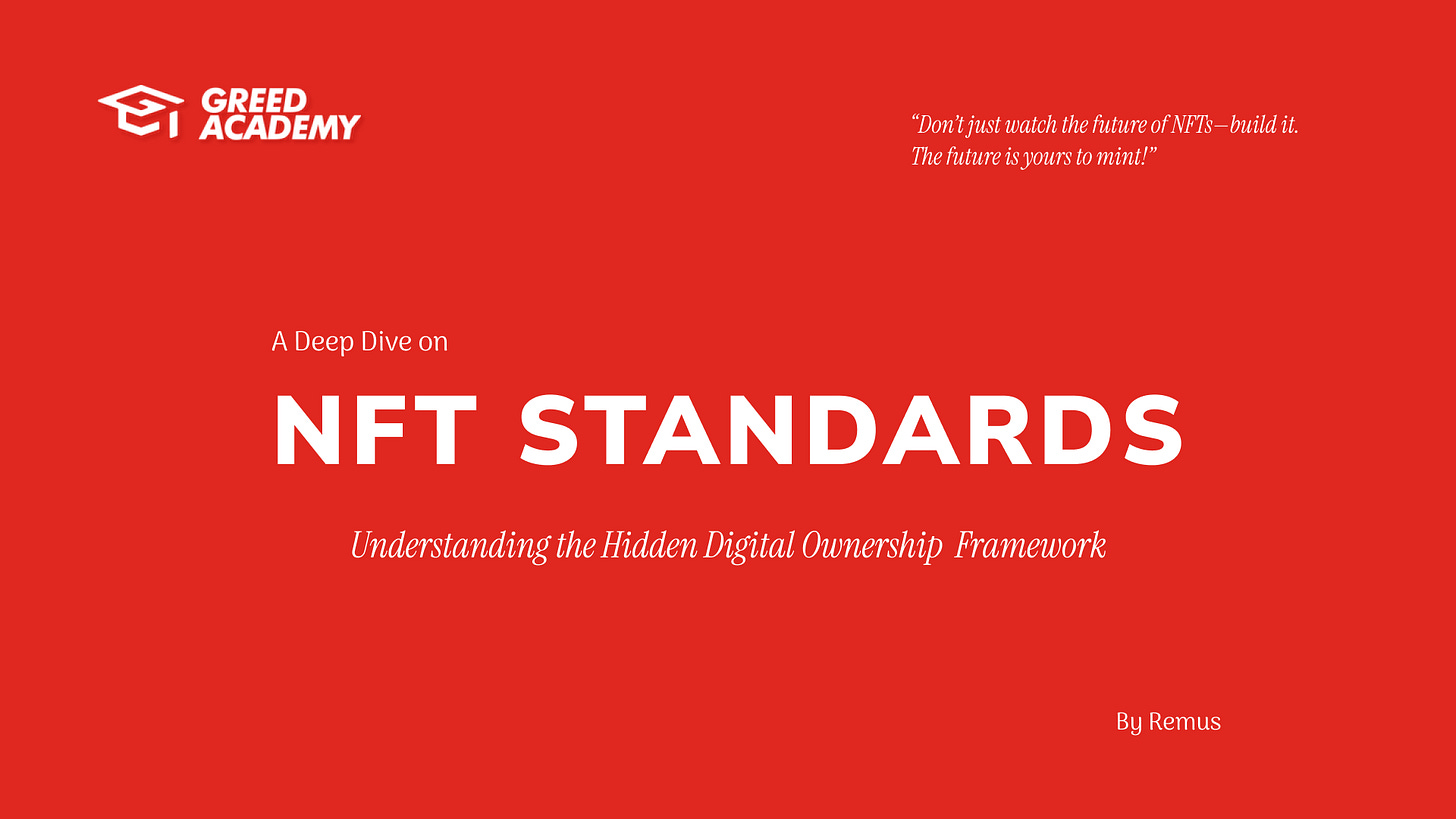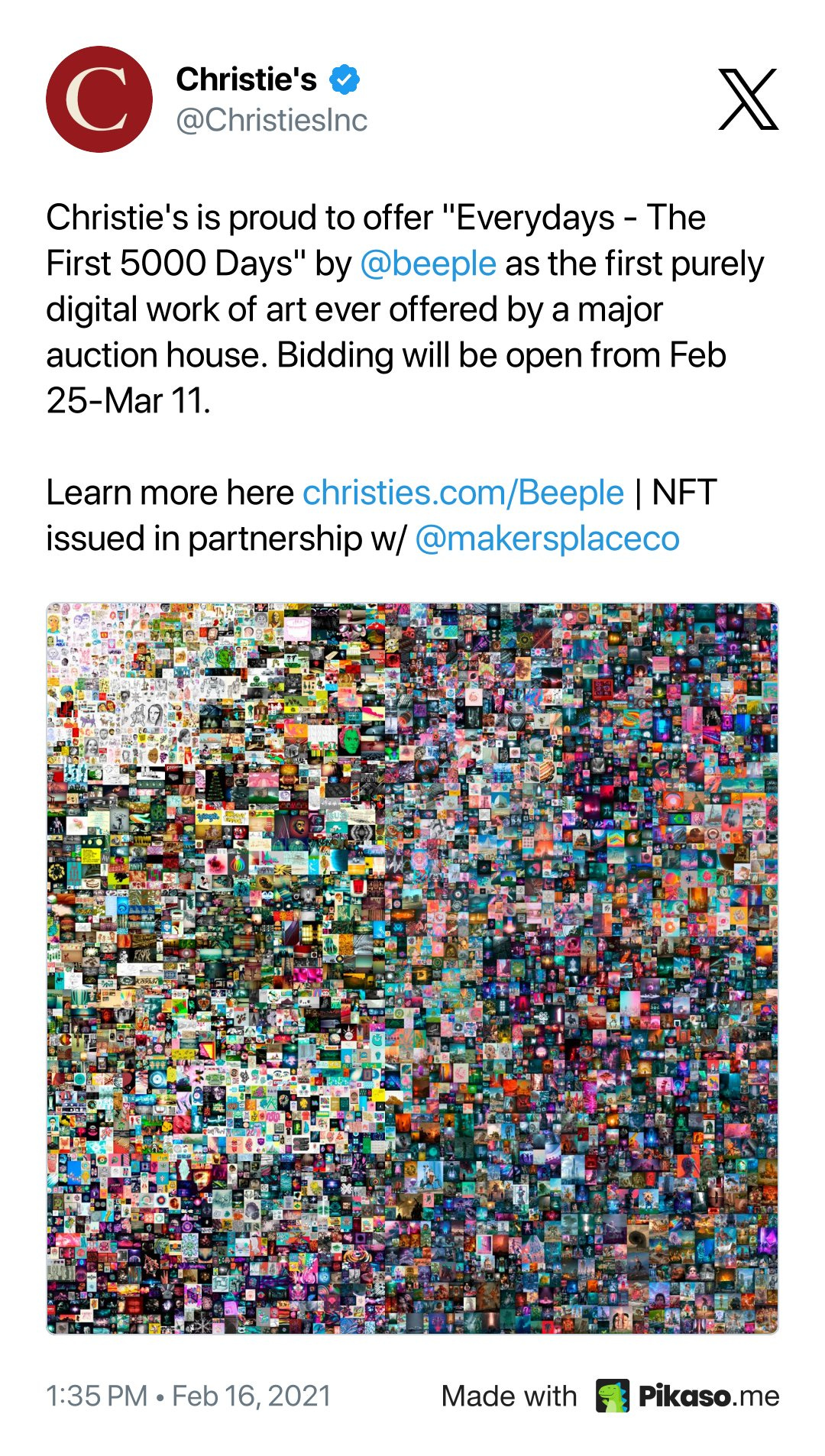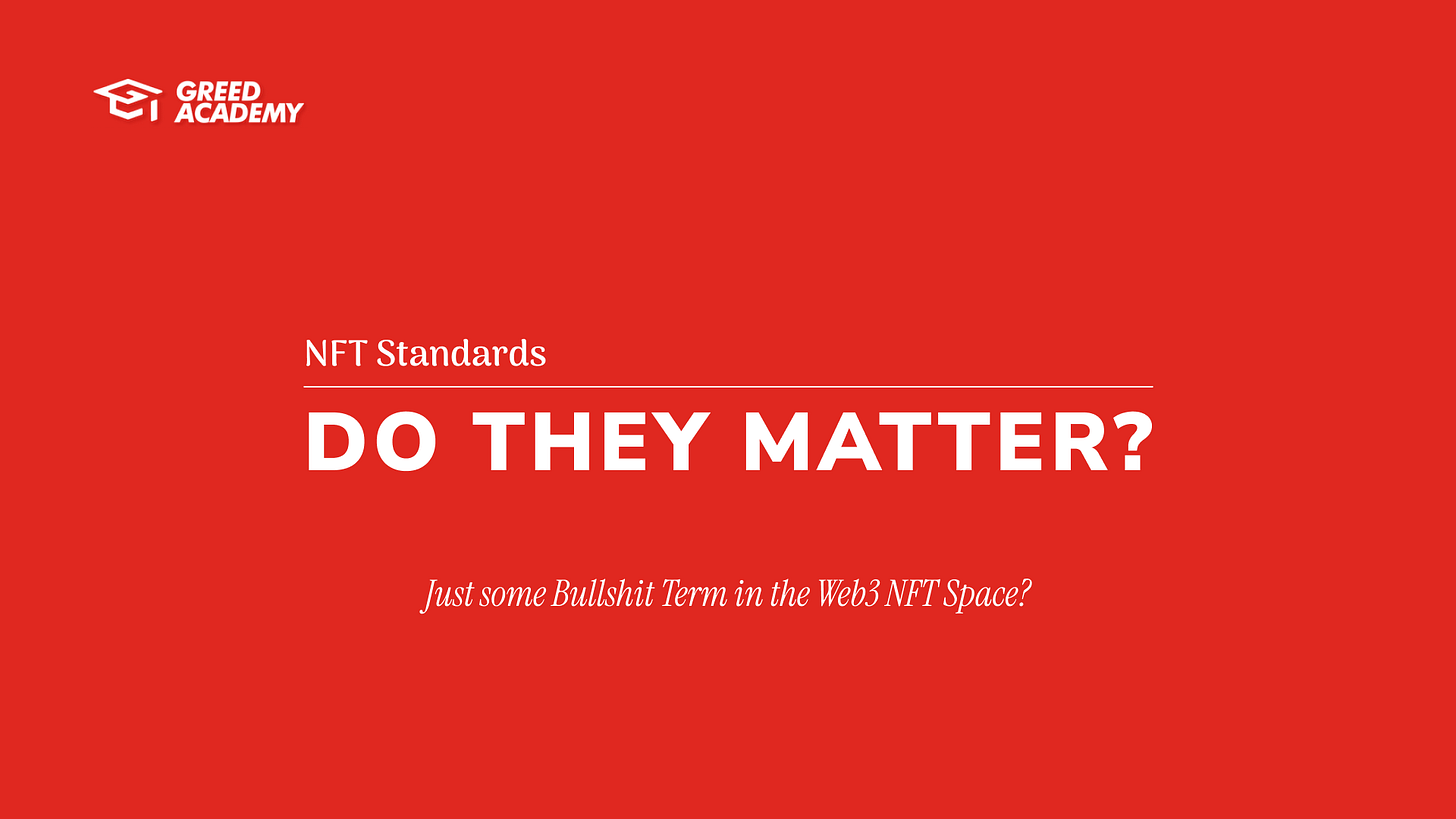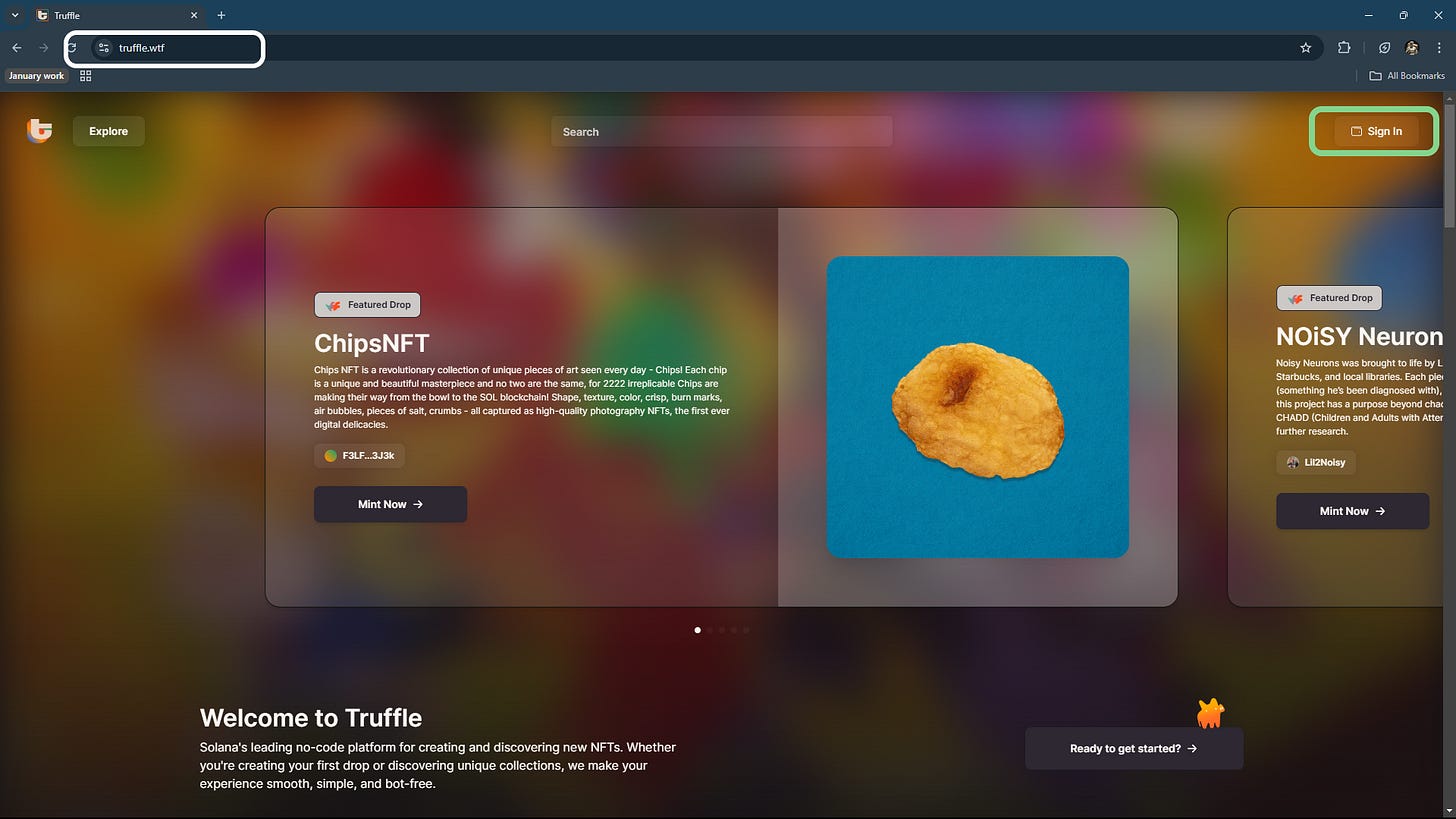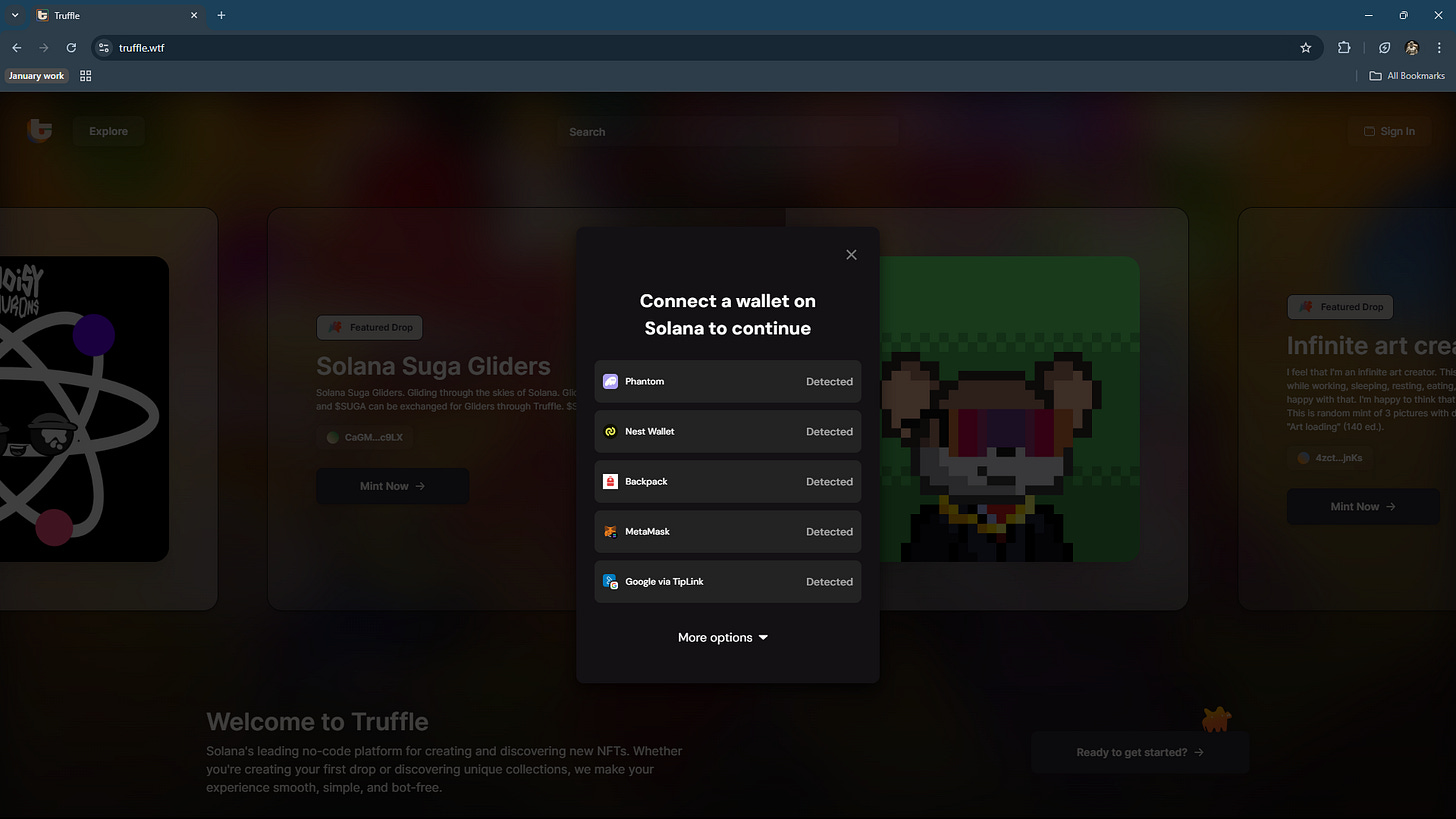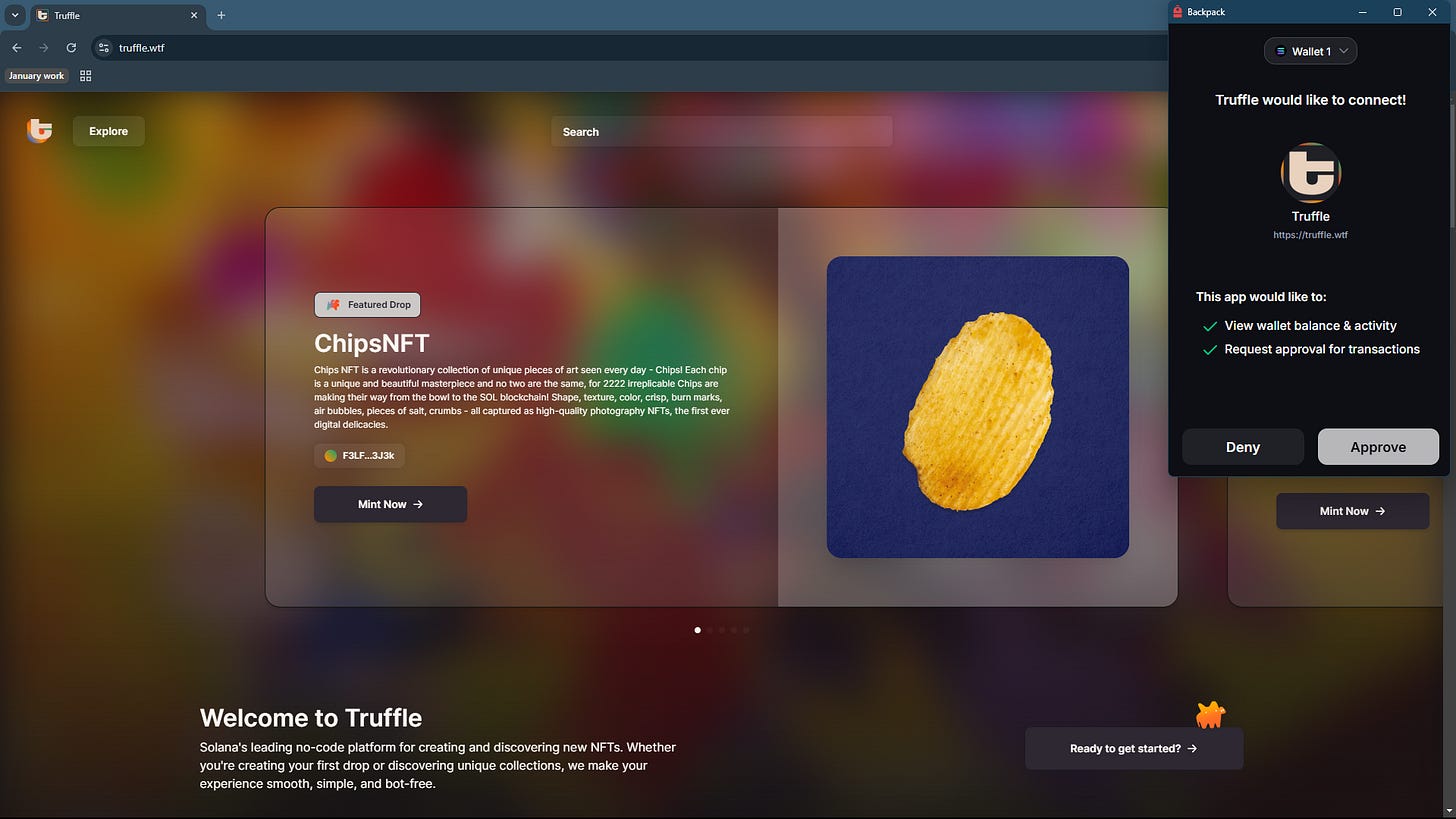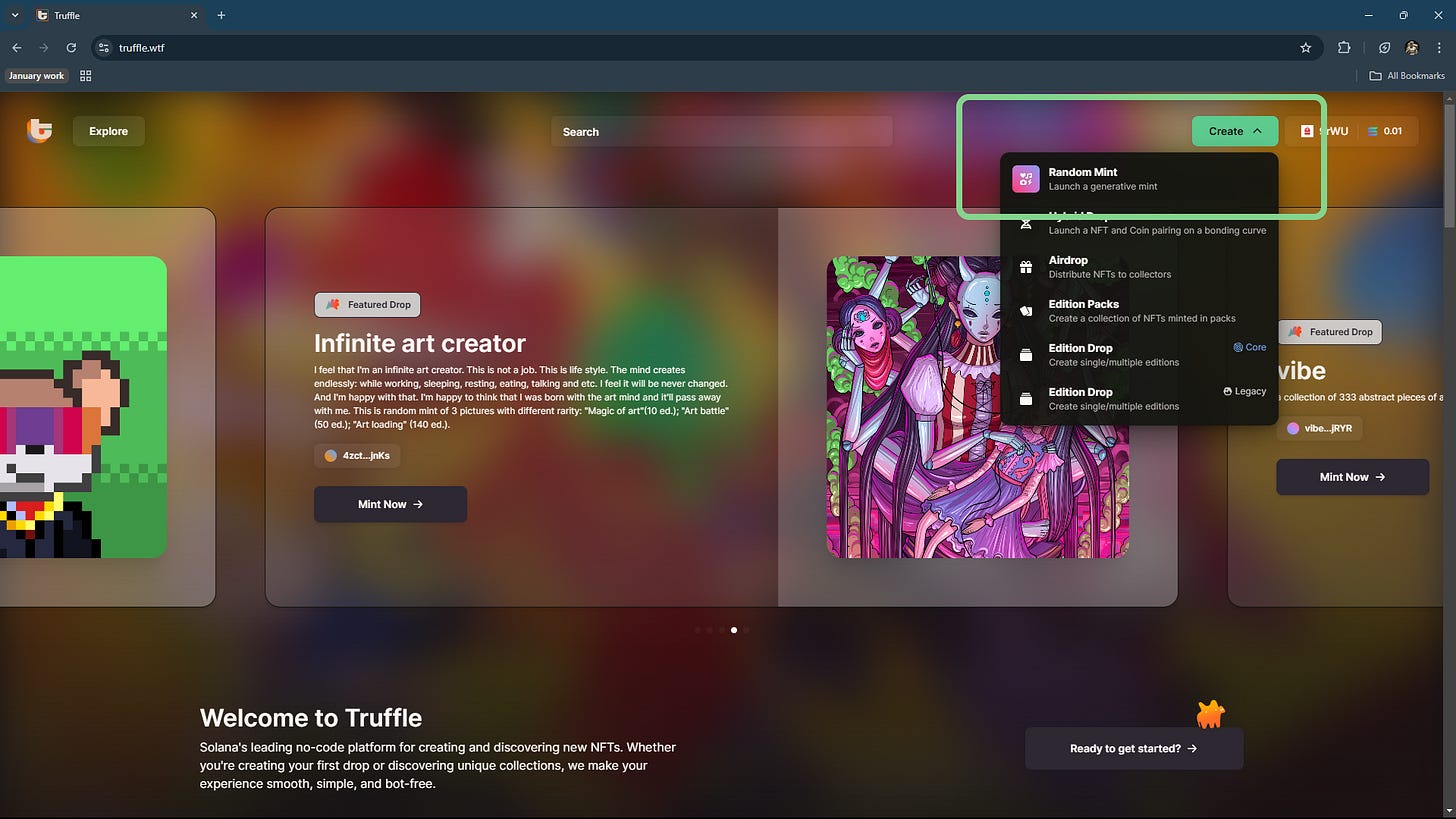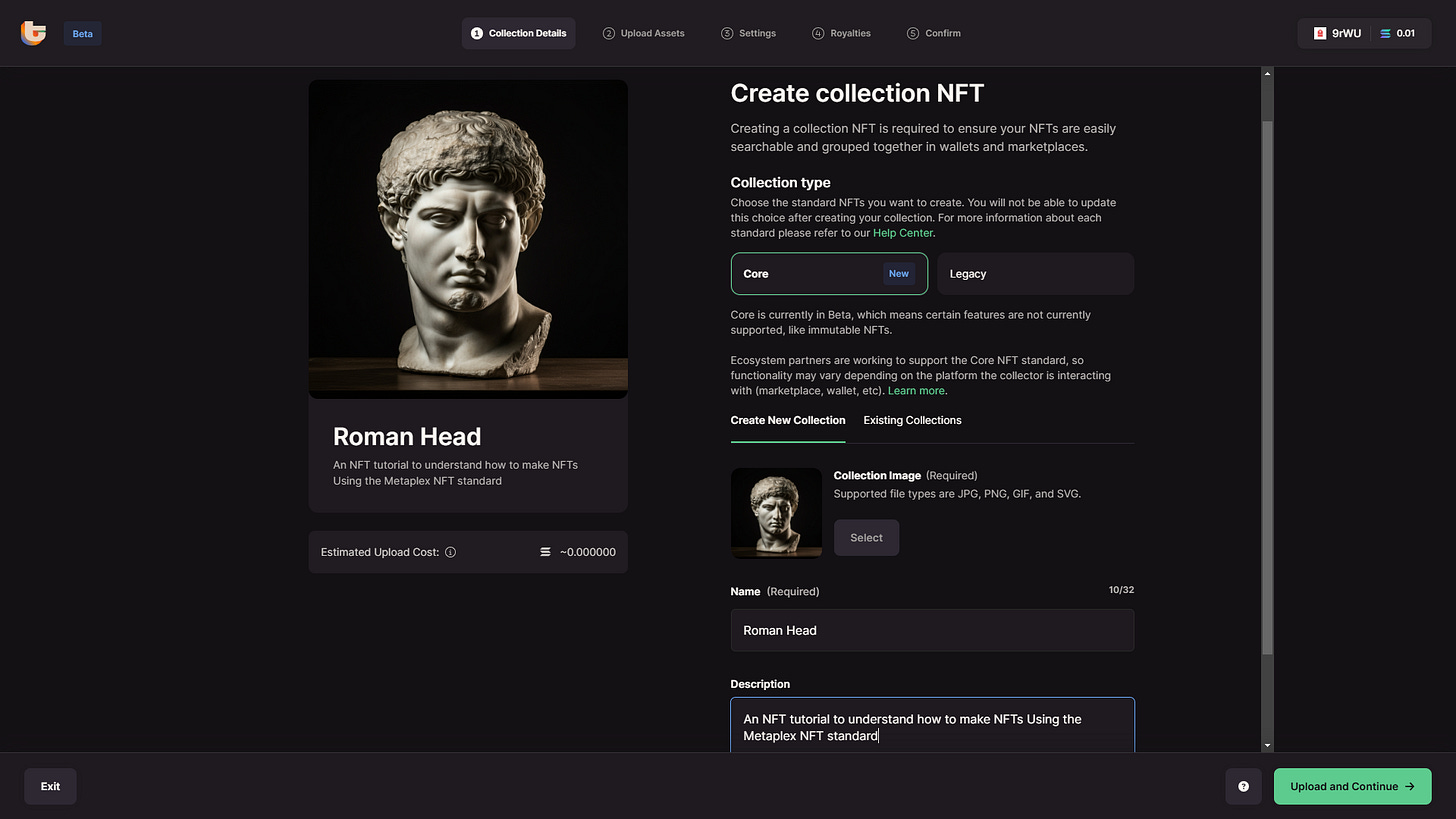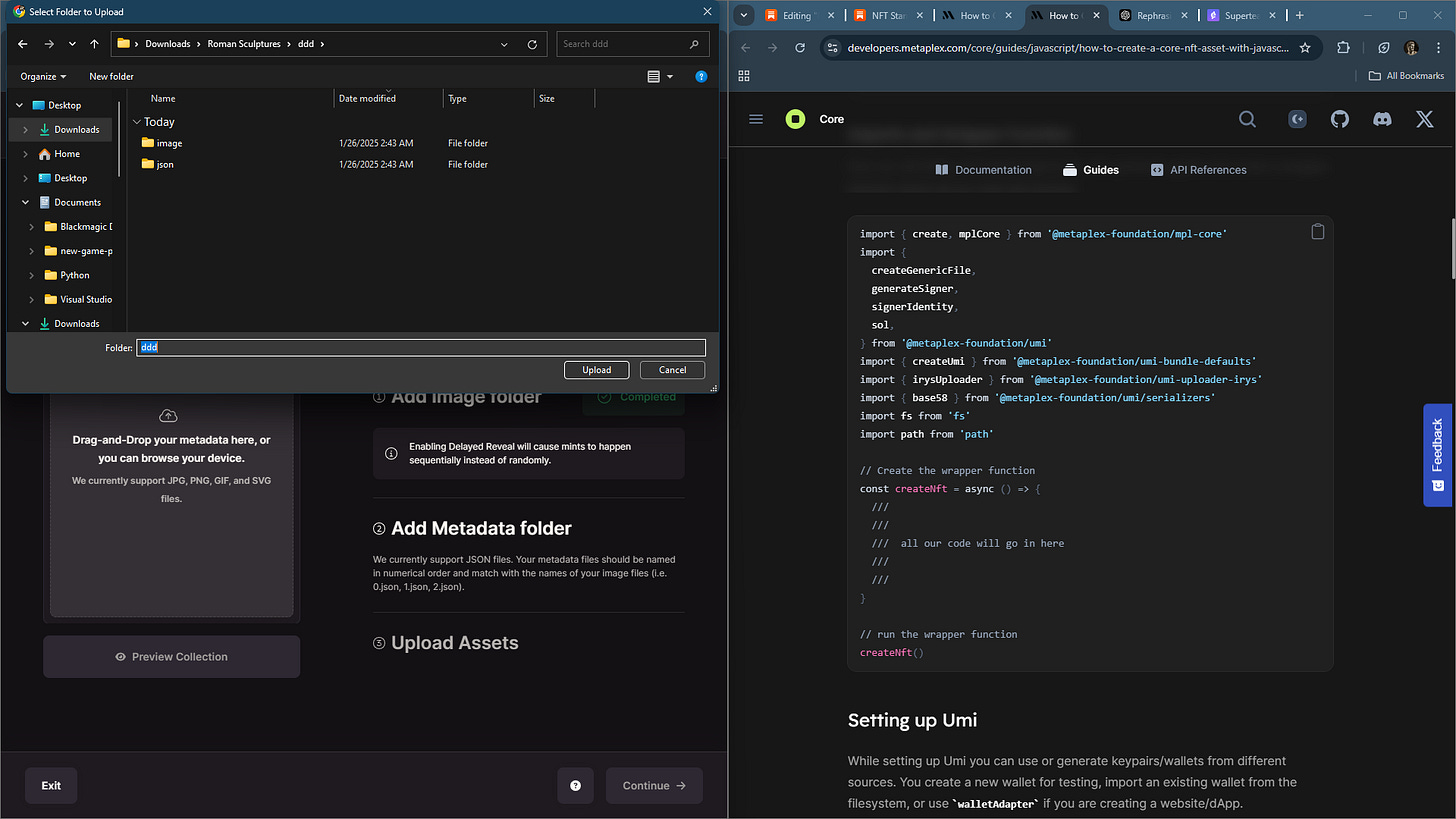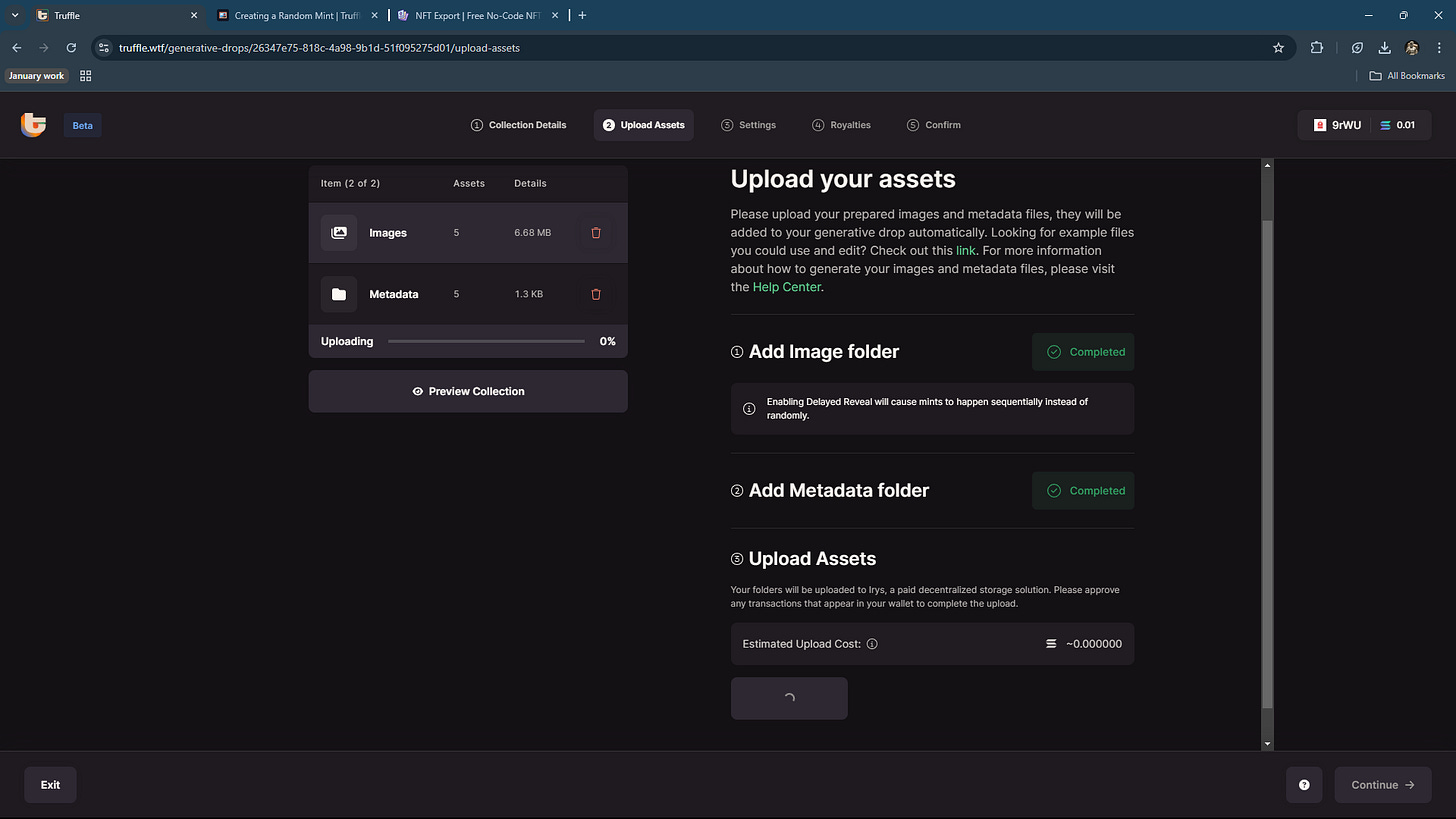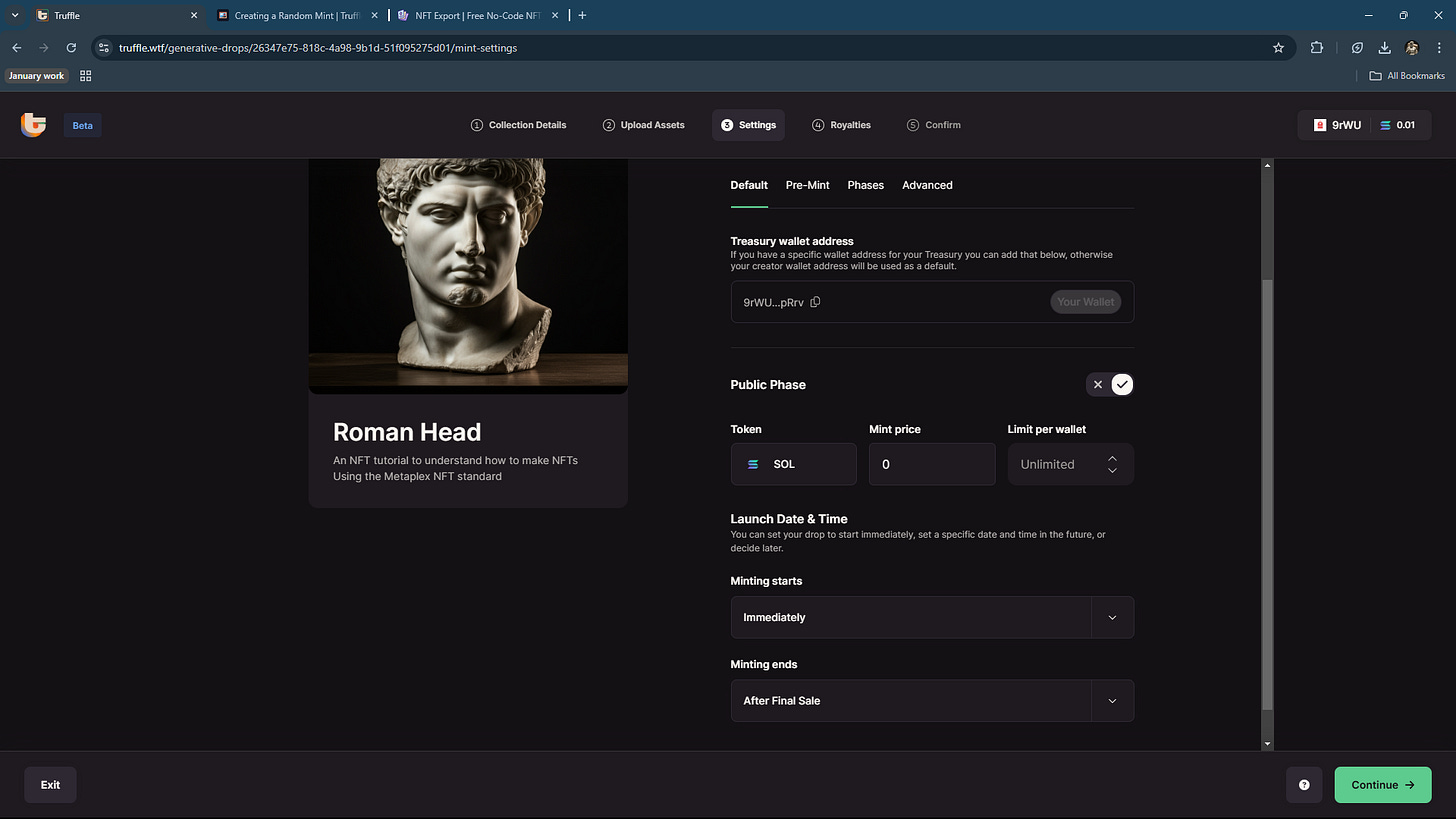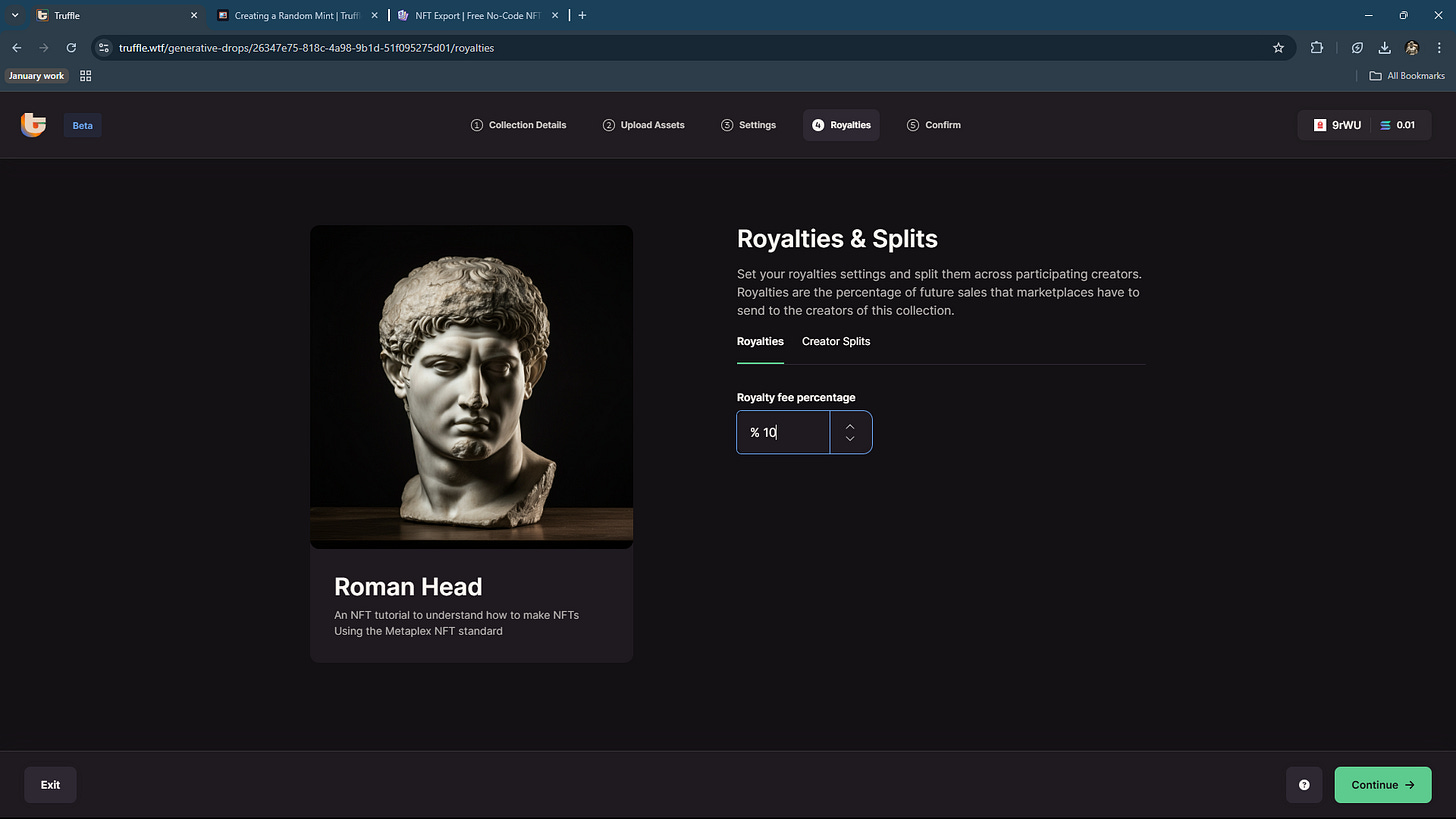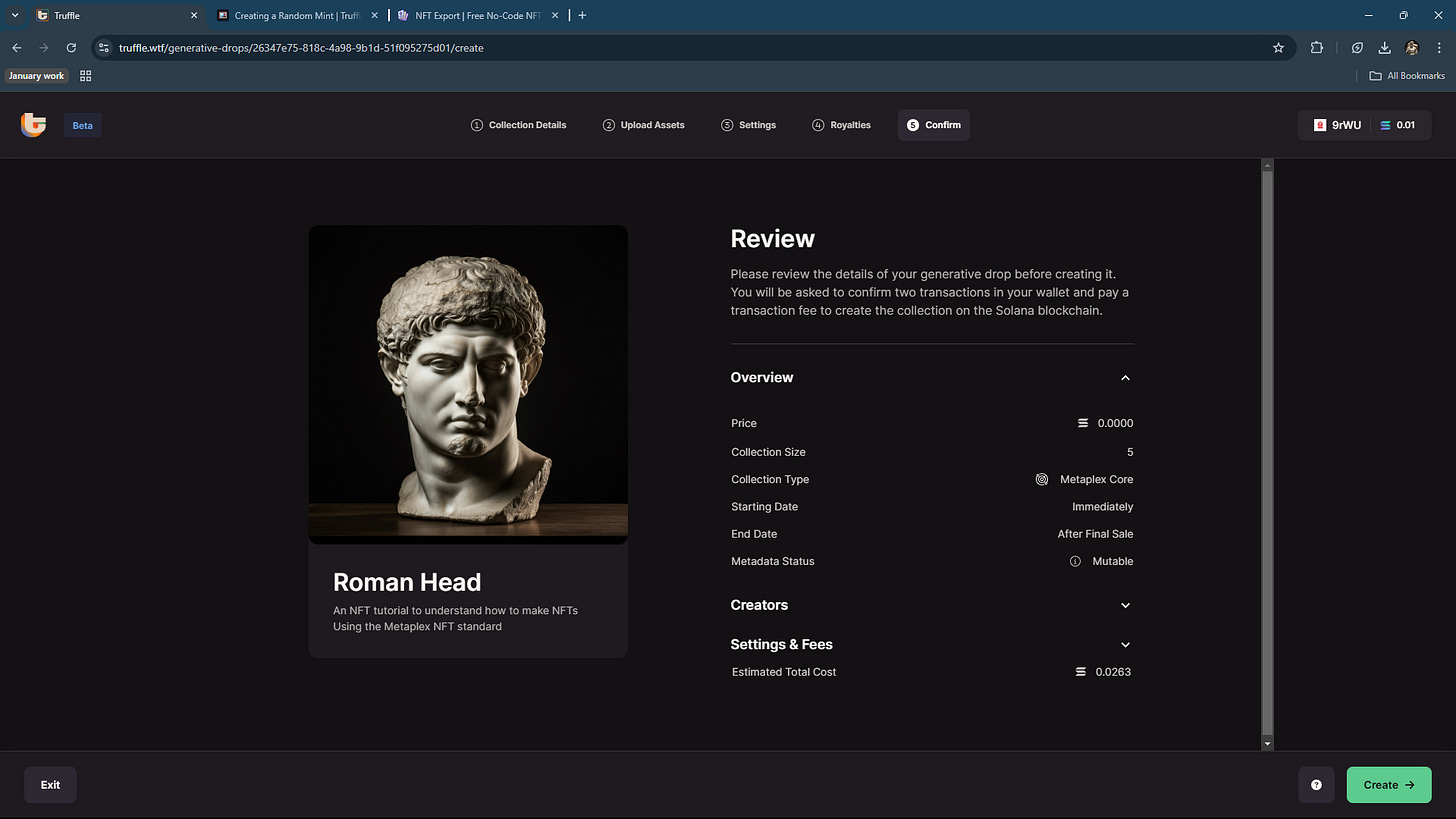NFT Standards — The Hidden Framework Powering Digital Ownership
A comprehensive guide to understanding, creating, and innovating with NFT standards
Introduction: The DNA of NFTs
Over the past few years, NFTs have evolved from niche blockchain experiments to mainstream phenomena, reshaping entire industries. Take Beeple’s Everydays: The First 5000 Days, which sold for a staggering $69 million at Christie’s in 2021. This marked a historic moment for digital art, proving that NFTs could transform how art is created, valued, and owned.
Beyond art, NFTs have pioneered new possibilities, such as virtual land sales in metaverse platforms like Decentraland, where a single plot sold for $2.43 million in 2021, highlighting the demand for digital real estate.
From empowering creators to enabling unique, tradeable assets in blockchain-based games like Axie Infinity, NFTs have unlocked a new era of creativity, value, and digital ownership.
These tokens have empowered artists, gamers, and entrepreneurs to break free from traditional limitations, giving rise to groundbreaking use cases once deemed unimaginable.
But as we marvel at these innovations, a deeper question arises: What makes all this possible?
How can an NFT minted on one platform be seamlessly displayed in a wallet like MetaMask or Phantom, traded on a marketplace like OpenSea or Magic Eden, or even integrated into blockchain games like The Sandbox? What ensures that digital assets retain their uniqueness, value, and interoperability?
The answer lies in NFT standards—the unsung frameworks powering this digital revolution. Standards like Ethereum’s ERC-721 and ERC-1155 ensure that NFTs can function reliably across platforms, creating a shared language for developers, artists, and businesses alike. They are the invisible threads weaving the vast ecosystem of NFTs into a cohesive whole, enabling consistency, compatibility, and limitless potential.
In this guide, we’ll pull back the curtain on NFT standards, exploring their mechanics, significance, and impact. You’ll learn how to create NFTs using these standards, understand their pivotal role in transforming industries, and uncover the hidden framework driving the digital ownership revolution. Let’s dive in!
The Foundation: Defining NFT Standards
To truly grasp the transformative power of NFTs, we must first decode the underlying structure that makes them possible. At their core, NFT standards are sets of rules and guidelines for building and managing non-fungible tokens on a blockchain.
These are the blueprints or protocols that define how NFTs are created, managed, and interact within a blockchain ecosystem.
Think of NFT standards as the DNA of digital assets, embedding unique characteristics while ensuring they function seamlessly across platforms. They dictate critical aspects such as:
Metadata Storage: Storing and retrieving information like an NFT’s name, description, image URL, and creator details. For instance, the metadata of Bored Ape Yacht Club (BAYC) NFTs includes traits like fur type, mouth, background and accessories, making each one distinct.
Token Uniqueness: Assigning a unique identifier (Token ID) to ensure every token is distinct. This uniqueness is why no two CryptoPunks or Axies are identical, even within the same collection.
Ownership and Transfer: Establishing protocols to track ownership and facilitate secure transfers. For example, when an NFT is sold on OpenSea, the blockchain updates the ownership, ensuring transparency and traceability.
Interoperability: Enabling NFTs to work seamlessly across wallets, marketplaces, and applications. This allows an NFT minted on Ethereum (ETH) to appear in MetaMask or be traded on Rarible without compatibility issues.
The Role of Standards in the Blockchain Ecosystem
Without NFT standards, the interoperability and usability we associate with NFTs would crumble. These standards provide a universal language, ensuring consistency and compatibility across places like:
Marketplaces and RWA Applications: NFTs minted on one platform, like a Foundation collection, can be traded on another, like OpenSea, and as well Real World Assets (RWAs) applications without technical barriers.
Wallets: Standards guarantee that NFTs are visible and functional across wallets such as MetaMask, Phantom (for Solana), and Trust Wallet etc.
Games and Applications: In blockchain games like Gods Unchained , NFTs representing cards are seamlessly tradable across marketplaces and usable within the game itself…
and much, much more!🚀
Prominent NFT Standards Across Blockchains
Different blockchains offer unique standards tailored to their ecosystems, with Ethereum paving the way:
Ethereum:
ERC-721: The pioneer NFT standard, introduced with CryptoKitties in 2017, was the first to define the concept of unique, non-fungible tokens on Ethereum. Each ERC-721 token represents a single, unique asset, making it perfect for digital art like Beeple’s $69M Everydays: The First 5000 Days. However, each token requires its own smart contract interaction, which can be resource-intensive for use cases that involve multiple items.
ERC-1155: Introduced later as a multi-token standard, ERC-1155 supports both fungible (e.g., in-game currencies) and non-fungible tokens (e.g., rare skins or weapons in games like Axie Infinity). Its key innovation is efficiency: it allows multiple token types to exist within a single smart contract, enabling batch transfers and reducing gas costs. This makes ERC-1155 especially suited for gaming ecosystems or scenarios where numerous similar assets are created and traded. Unlike ERC-721, which is strictly one token per contract, ERC-1155 can manage both unique and identical items, offering flexibility and scalability for developers.
Solana:
Metaplex Token Metadata Standard (SPL Standard):
The Metaplex Token Metadata Standard underpins most NFTs on Solana, providing a seamless way to attach metadata—such as names, descriptions, and media links—to tokens. Well-known collections like DeGods, Okay Bears, and Solana Monkey Business rely on this standard for their creation. The Metaplex standard ensures easy integration with marketplaces like Magic Eden and Tensor, making it the go-to standard for NFT creators and traders on Solana.Programmable NFTs (pNFTs):
pNFTs enable enhanced functionality by embedding programmability into NFTs, which supports use cases like dynamic traits, on-chain royalties, and real-time updates. Projects such as Mad Lads have pioneered the adoption of pNFTs, showcasing their ability to enforce royalties and create more interactive experiences. These features are particularly valuable for gaming, art, and collectibles, where adaptability and creator-focused economics are critical.Compression NFTs (cNFTs):
Compression NFTs address the scalability challenges of large-scale NFT projects by leveraging state compression technology to reduce costs. A notable example is Drip, a platform distributing free NFTs to users at scale, made possible through cNFTs’ cost-efficient structure. This approach is also gaining traction in loyalty programs, ticketing, and gaming, where millions of NFTs are distributed without excessive expenses.Custom SPL-Based Standards:
Some projects push the boundaries of Solana’s capabilities by building customized SPL-based NFT standards. For instance, Aurory, a blockchain-based gaming ecosystem, incorporates custom SPL token configurations to create NFTs with unique functionalities, such as in-game characters and items. These bespoke implementations demonstrate the flexibility of the SPL token program for specific applications.
Polygon:
ERC Standards Compatible: Polygon operates as a Layer 2 scaling solution for Ethereum, offering full compatibility with Ethereum’s ERC standards while significantly reducing gas fees and increasing transaction speed. This makes it an attractive platform for projects looking to leverage Ethereum's security and developer ecosystem without the high costs. Projects like Zed Run, a popular digital horse racing game, have chosen Polygon for affordable NFT minting and trading. By adhering to Ethereum-based standards like ERC-721 and ERC-1155, Polygon ensures seamless interoperability with Ethereum wallets, marketplaces, and infrastructure, while offering the scalability needed for high-throughput applications such as gaming and large-scale NFT drops.
Alright, We'll conclude the list of chain NFT standards at this point. For further details, feel free to explore additional information here.
How NFT Standards Work in Practice
To illustrate, let’s follow the lifecycle of an NFT:
Creation: An artist mints an NFT on Ethereum say using the ERC-721 standard for example. This embeds metadata, such as the artwork’s title, description, and creator’s signature.
Storage: Metadata is stored either on-chain or via decentralized storage solutions like IPFS (InterPlanetary File System) for security and permanence.
Interoperability: The NFT appears in wallets like MetaMask, adhering to ERC-721 protocols, and can be listed on marketplaces such as OpenSea or Rarible.
Transfer: When purchased, the blockchain records the transaction, transferring ownership while ensuring the NFT’s provenance remains intact.
Why NFT Standards Matter
The importance of NFT standards cannot be overstated. They:
Ensure Uniqueness: Prevent duplication and safeguard the scarcity that gives NFTs their value, such as the exclusivity of a CryptoPunk.
Enable Interoperability: Create a thriving ecosystem where NFTs can move freely across platforms, enhancing user experience and utility.
Drive Innovation: By providing a solid foundation, standards empower developers to create advanced use cases like:
Fractional Ownership: Splitting ownership of a high-value NFT, like a rare artwork, into multiple shares.
Dynamic NFTs: Assets that evolve over time or respond to external inputs, such as real-time sports highlights in NBA Top Shot.
Programmable Royalties: Ensuring creators earn a percentage of every resale, a feature popularized by platforms like Foundation.
In the next section, we’ll dive into the technical process of creating NFTs, tying these high-level concepts to actionable insights for developers and creators alike.
Hands-On: Creating an NFT On Solana using MetaPlex Standard (EASY)
Step 1: Acquire a Solana-compatible wallet, such as Phantom, Solflare, or Backpack, by installing the respective Chrome extension.
Step 2: Visit truffle.wtf and select the "Sign In" option.
Step 3: Connect your wallet. For this demonstration, I will be using the Backpack wallet.
Step 4: After signing in, click on the "Create" button and select "Random Mint." While other options are available, we will focus on using the "Random Mint" option for the purpose of this tutorial.
Step 5: Select "CORE" as the Metaplex NFT standard, as it is the recommended version for developers, according to the Metaplex documentation. Next, click the "Upload" button to upload your image, and be sure to provide a name and description for your NFT. Finalize this step by clicking the green “Upload and Continue” button.
Step 6: Upload the respective “Image” folder and “Json” Folder of the NFT assets which you intend to create and approve the transaction. I will leave a link to my folder for practice purposes of this tutorial.
Step 7: After uploading, you can customize various settings, including the mint price, the token used for minting, wallet limits, launch date and time, and other parameters.
Step 8: This also goes the same for royalties & splits;
Final Step: Congratulations! You’ve successfully created your first NFT using the Solana Metaplex NFT Standard. Ensure you have a small amount of SOL to cover the gas fees, and then click "CREATE" to finalize your NFT.
Note: These steps are similar, with slight variations, to those you would follow when creating an NFT using any other standard say; Ethereum ERC-721 standard.
In the next segment, we will explore the innovations brought about by NFT standards and how they have advanced the digital ownership ecosystem.
Beyond Basics: Cutting-Edge Innovations in NFT Standards
NFT standards are constantly evolving, enabling exciting use cases and pushing the boundaries of what digital ownership means. From time-based ownership to AI-enhanced experiences, these innovations are transforming how NFTs interact with real-world scenarios and virtual ecosystems. Here’s a closer look at these cutting-edge developments.
Rentable NFTs: Time-Based Ownership
Standards like EIP-4907 have introduced the concept of rentable NFTs, enabling temporary transfers of ownership without relinquishing the underlying asset.
Real-Life Scenarios
Gaming: Players can rent high-value in-game assets, such as characters or equipment, for a specific period without purchasing them outright. For example, a rare sword NFT in a game could be rented for use during a tournament.
Metaverse Real Estate: Virtual landowners can rent their property for events, advertisements, or pop-ups in virtual worlds like Decentraland or Somnium Space.
Educational Content: NFTs containing course access or educational resources can be rented temporarily, providing affordable learning opportunities.
Dynamic NFTs: Evolving with External Data Inputs
Dynamic NFTs (dNFTs) adapt and evolve based on real-world or digital inputs, utilizing standards that support metadata updates. Some scenarios include;
Sports Performance NFTs: Imagine owning a dynamic NFT of your favorite athlete that updates stats like goals scored or match wins. Projects like Sorare use similar concepts to gamify sports engagement.
Gaming Progress: In blockchain games, characters or items can evolve as players achieve milestones. For example, an NFT sword could gain power as the player defeats enemies.
Weather and Climate Art: Art NFTs that change based on real-time weather or environmental data, creating a bridge between technology and nature.
Fractionalized NFTs: Shared Ownership
Fractionalization splits an NFT into smaller shares, enabling shared ownership. Platforms like Fractional.art leverage these standards, making high-value assets accessible to a broader audience including;
Art Collectibles: Fractionalizing a multimillion-dollar NFT, such as Beeple's "Everydays: The First 5000 Days," allows smaller investors to own a piece of the artwork.
Real Estate: Tokenized physical properties can be fractionalized, enabling multiple investors to collectively own and benefit from real-world assets.
DAO Governance: Shared NFT ownership can grant collective voting rights in DAOs, enabling democratic decisions for NFT-related projects.
AI-Powered NFTs: Interactive Experiences
The integration of AI with NFTs has unlocked new possibilities for interactive and adaptive digital assets. Projects are exploring ways to make NFTs more engaging by using engines like GPT or proprietary AI models such as;
AI Companions: Projects like Alethea AI enable the creation of interactive avatars that respond intelligently to user inputs, effectively turning NFTs into AI-driven virtual assistants.
Customizable Characters: In gaming, players can own NFT-based characters that learn and adapt to their play style over time.
AI-Enhanced Storytelling: NFTs that provide personalized, AI-generated stories, evolving based on user preferences and interactions.
Royalty Enforcement: Sustaining Creator Revenue
Royalty standards like EIP-2981 ensure creators earn a percentage of secondary sales, fostering sustainability including;
Art Communities: Platforms like Foundation and Zora implement royalty enforcement to guarantee artists continue earning as their work changes hands.
Music NFTs: Musicians can earn recurring revenue as their songs are sold or streamed via NFTs. Projects like Audius are exploring such integrations.
Gaming Assets: Ensuring game developers receive royalties from resales of in-game NFTs, incentivizing high-quality asset creation.
Challenges persist with royalty enforcement, especially on marketplaces that don’t support these mechanisms. Innovations like on-chain royalty contracts are emerging to address these gaps.
Multi-Layered NFTs: Composable and Nested Assets
Multi-layered NFTs allow NFTs to own or be linked to other NFTs, enabling composability. This innovation is crucial for gaming, metaverse applications, and more like
Gaming: A game character NFT can "hold" weapon or accessory NFTs, each independently tradable or upgradeable. For instance, a warrior NFT could be linked to an NFT sword, shield, and armor.
Metaverse Avatars: Avatars in the metaverse can incorporate modular components, such as clothing, accessories, or skins, all represented as nested NFTs.
Collectibles: Projects like Composable NFTs allow collectors to assemble parts (e.g., assembling car NFTs from wheels, engine, and chassis) to create unique, customizable digital assets.
What’s Next: The Future of NFT Standards
As the NFT landscape evolves, the need for more robust, adaptable, and innovative standards grows. These standards will shape the next frontier of digital ownership, enhancing existing applications while unlocking unprecedented possibilities. Here, we explore key trends and speculative ideas that define the future of NFT standards.
Emerging Standards for New Use Cases
Future NFT standards will extend beyond art and collectibles, enabling more complex and dynamic use cases. Examples include:
Composable Financial NFTs: New standards could support NFTs representing financial instruments like bonds, options, or shares. These NFTs might integrate with DeFi protocols for yield generation, automated dividends, or tokenized insurance contracts.
Example: A standard enabling fractionalized ownership of real estate or other tangible assets.
Dynamic Metadata Standards: Enhancements to standards like ERC-1155 could allow for real-time updates to NFT metadata based on external triggers, such as game achievements or environmental data.
Use Case: A digital sports card NFT updating with live player stats.
Interoperability Across Ecosystems
The future of NFTs lies in their ability to transcend blockchain boundaries. Interoperability protocols will play a central role:
Wormhole: Facilitates cross-chain NFT transfers by locking assets on one chain and minting equivalents on another.
Axelar: Provides secure, universal interoperability for NFTs, enabling seamless interaction across ecosystems.
IBC (Inter-Blockchain Communication): As seen on Cosmos, IBC enables NFTs to move and function fluidly between chains, fostering true cross-ecosystem utility.
These innovations will empower creators to mint NFTs without worrying about ecosystem silos, opening up entirely new markets.
NFT Governance and DAOs
NFT standards will increasingly support decentralized governance mechanisms:
Voting Systems: Standards like EIP-712 (structured data signing) could integrate with NFTs for governance, enabling token-based voting in DAOs.
Example: A DAO where voting power is determined by NFT rarity or specific traits, such as owning a Bored Ape.
On-Chain Credentialing: NFTs could represent membership or credentials within a DAO, ensuring transparency and accountability in governance processes.
Speculative Ideas: Pushing the Boundaries
While many developments are grounded in current trends, some ideas push the conceptual boundaries of NFTs and their standards:
NFTs as Gateways to the Metaverse: Emerging standards might allow NFTs to serve as interoperable avatars, digital passports, or access keys within metaverse platforms.
Example: A single NFT unlocking experiences in Decentraland, The Sandbox, and other virtual worlds.
Digital Twins for IoT: NFTs could represent physical devices or objects, creating a bridge between the Internet of Things (IoT) and blockchain.
Example: A smart car’s digital twin NFT storing maintenance records, usage data, and ownership history.
AI-Integrated NFTs: Future standards might support AI-generated or AI-interactive NFTs, enabling dynamic, personalized experiences.
Use Case: An AI-driven NFT art piece evolving based on the holder’s preferences or interactions.
Challenges and Opportunities
While the possibilities are vast, realizing these futures will require addressing significant challenges:
Standardization Across Chains: Developing universal standards that work seamlessly across blockchains.
Scalability: Ensuring that new standards do not compromise transaction speeds or increase costs.
Regulation: Navigating legal frameworks as NFTs become more embedded in real-world applications.
The Road Ahead
The future of NFT standards is as dynamic as the technology itself. By enabling composability, interoperability, and governance, and by exploring speculative applications, these standards will drive the next wave of innovation in blockchain. As creators, developers, and visionaries converge on these opportunities, NFTs will continue to redefine what’s possible in the digital world and beyond.
Conclusion: The Gateway to Innovation
NFT standards are more than technical specifications—they are the invisible threads weaving together the fabric of the blockchain ecosystem. They provide the structure that empowers creators, developers, and innovators to push boundaries, enabling everything from seamless cross-marketplace trading to groundbreaking use cases like dynamic and composable NFTs.
Understanding these standards is essential for navigating and thriving in the world of Web3. Whether you’re a creator looking to launch your first NFT collection, a developer building interoperable applications, or an investor seeking the next big innovation, the knowledge of how these standards work will give you a competitive edge.
NFT standards aren’t just protocols—they’re the foundation for the next wave of Web3 creativity and utility. They’re what make digital ownership possible, accessible, and endlessly innovative. As new standards emerge and existing ones evolve, the opportunities will only grow.
The future of NFTs isn’t just something to watch—it’s something to build. The future is yours to mint.
References
https://developers.metaplex.com/guides/javascript/how-to-create-an-nft-on-solana
https://developers.metaplex.com/core/guides/javascript/how-to-create-a-core-nft-asset-with-javascript
https://developers.metaplex.com/token-metadata/guides/javascript/create-an-nft
https://medium.com/@kaylaychi77/current-and-upcoming-nft-standards-on-solana-7746920cc0d0


